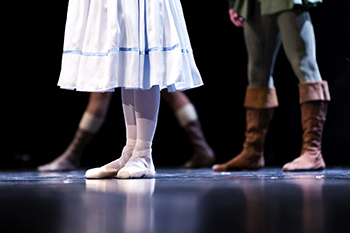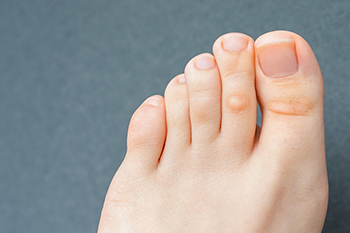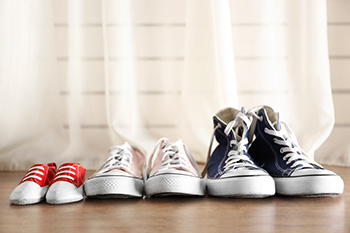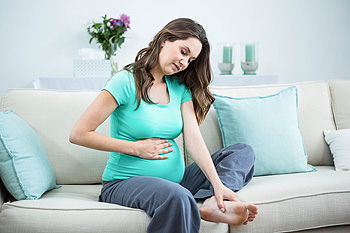Stuart (772) 223-8313Rate Us
Jupiter (561) 744-6683Rate Us
Stuart (772) 223-8313Rate Us
Jupiter (561) 744-6683Rate Us

Many people do not realize that dancers are athletes, too. Their feet, which are involved in nearly every movement, take a great deal of pounding from jumps, leaps, and running – sometimes while wearing toe shoes. In addition, because of the nature of dancing, the ankles as well as the feet and toes are always at risk of injury. One of the common injuries is known as a dancer’s fracture, which affects the 5th metatarsal, and is caused by landing on the side of the foot or twisting an ankle. Landing awkwardly from a jump or leap also can cause a sprained ankle. Bunions and other toe deformities are common to dancers, exacerbated by wearing shoes that can be up to two sizes smaller than their feet. Wearing toe shoes also may aggravate the big toe joint and aid in bunion formation. Stress fractures of the feet are often the result of repetitive movements that can cause the bones to weaken. Anyone who spends a lot of time dancing may wish to have an ongoing relationship with a podiatrist who can examine, diagnose, and treat injuries related to their activity.
Foot and ankle trauma is common among athletes and the elderly. If you have concerns that you may have experienced trauma to the foot and ankle, consult with one of our podiatrists from Advanced Foot & Ankle Specialists, PA. Our doctors will assess your condition and provide you with quality foot and ankle treatment.
Foot and ankle trauma cover a range of injuries all over the foot; common injuries include:
Symptoms
Symptoms of foot and ankle injuries vary depending on the injury, but more common ones include:
Diagnosis
To properly diagnose the exact type of injury, podiatrists will conduct a number of different tests. Some of these include sensation and visual tests, X-rays, and MRIs. Medical and family histories will also be taken into account.
Treatment
Once the injury has been diagnosed, the podiatrist can than offer the best treatment options for you. In less severe cases, rest and keeping pressure off the foot may be all that’s necessary. Orthotics, such as a specially made shoes, or immobilization devices, like splints or casts, may be deemed necessary. Finally, if the injury is severe enough, surgery may be necessary.
If you have any questions, please feel free to contact one of our offices located in Stuart and Jupiter, FL . We offer the newest diagnostic and treatment technologies for all your foot care needs.

Corns are one of the most uncomfortable foot conditions that can develop. It happens as a result of excess friction that comes from wearing shoes and socks that do not fit correctly. Corns can form on top of the toes, on the side of the pinky toe, or between the toes. There are two categories of corns, consisting of hard or soft. The latter forms between the toes and remains soft from existing moisture that is found there, and they appear to be whiter than hard corns. Hard corns can form on top of the toes or on the bottom of the feet. It is helpful to wear shoes that fit properly. This is beneficial in reducing the corn to a smaller size, and it may gradually completely diminish. Many people wear a protective pad over the corn, which may provide adequate cushioning and possibly reduce the pain that is associated with corns. If you have developed a corn that is extremely bothersome, it is suggested that you consult with a podiatrist who can offer you correct treatment options, which may include medication.
Corns can make walking very painful and should be treated immediately. If you have questions regarding your feet and ankles, contact one of our podiatrists of Advanced Foot & Ankle Specialists, PA. Our doctors will treat your foot and ankle needs.
Corns: What Are They? And How Do You Get Rid of Them?
Corns are thickened areas on the skin that can become painful. They are caused by excessive pressure and friction on the skin. Corns press into the deeper layers of the skin and are usually round in shape.
Ways to Prevent Corns
There are many ways to get rid of painful corns such as:
Treating Corns
Although most corns slowly disappear when the friction or pressure stops, this isn’t always the case. Consult with your podiatrist to determine the best treatment option for your case of corns.
If you have any questions please feel free to contact one of our offices located in Stuart and Jupiter, FL . We offer the newest diagnostic and treatment technologies for all your foot and ankle needs.

Choosing shoes that are the correct size and fit can prevent unwanted foot injuries and discomfort. Key tips for finding perfect shoes are discussed here. Trace your foot and put the shoe you might buy on top of that tracing to see if it is the right size and shape. Shop for shoes in the afternoon as the foot naturally expands during the day. Wear the same foot coverings to the store that you might wear with the shoes being bought. Have a salesperson measure both feet and go with the size of your larger foot (if one of your feet is larger than the other). While standing, make sure the shoes have enough room in the toe box for the toes to move freely. Walk around in the shoes to make sure they fit properly. Are they wide enough, and not too snug or loose? Choose comfortable shoes by making sure the shoe does not have tags or seams that might irritate the foot or cause friction. Finally, examine the soles of the shoes to make sure they are sturdy and provide enough cushioning. If you are having trouble finding shoes that work well for your feet or are experiencing any kind of foot pain, consult with a podiatrist who can provide insight on shoes to purchase for your feet, as well as treat any foot problems you might have.
It is important to find shoes that fit you properly in order to avoid a variety of different foot problems. For more information about treatment, contact one of our podiatrists from Advanced Foot & Ankle Specialists, PA. Our doctors will treat your foot and ankle needs.
Proper Shoe Fitting
Shoes have many different functions. They cushion our body weight, protect our feet, and allow us to safely play sports. You should always make sure that the shoes you wear fit you properly in order to avoid injuries and deformities such as: bunions, corns, calluses, hammertoes, plantar fasciitis, stress fractures, and more. It is important to note that although a certain pair of shoes might be a great fit for someone else, that doesn’t mean they will be a great fit for you. This is why you should always try on shoes before buying them to make sure they are worth the investment. Typically, shoes need to be replaced ever six months to one year of regular use.
Tips for Proper Shoe Fitting
The shoes you buy should always feel as good as they look. Shoes that fit properly will last longer, feel better, and improve your way of life each day.
If you have any questions, please feel free to contact one of our offices located in Stuart and Jupiter, FL . We offer the newest diagnostic and treatment technologies for all your foot care needs.

When a woman is pregnant, she experiences many different physical changes that can affect all parts of her body. The woman’s foot is one such body part that can be affected. A woman may experience general pain and discomfort in her feet, or even conditions such as plantar fasciitis, during her pregnancy. This is because as the baby grows inside the woman, she carries more weight when she walks, which can lead to pain. A woman’s feet will also become swollen, especially during the third trimester of her pregnancy, because she experiences an increase of bodily fluids and blood volume. Hormonal changes may also contribute to swollen feet during pregnancy. To mitigate swollen feet, a pregnant woman may try to drink a significant amount of water and encourage healthy blood circulation to the feet by avoiding crossing her legs or ankles when sitting. Pregnancy is undoubtedly an exciting yet stressful time for a woman. To get a better understanding of how your pregnancy might be affecting your feet, it is suggested that you consult with a podiatrist.
Pregnant women with swollen feet can be treated with a variety of different methods that are readily available. For more information about other cures for swollen feet during pregnancy, consult with one of our podiatrists from Advanced Foot & Ankle Specialists, PA. Our doctors will attend to all of your foot and ankle needs.
What Foot Problems Can Arise During Pregnancy?
One problem that can occur is overpronation, which occurs when the arch of the foot flattens and tends to roll inward. This can cause pain and discomfort in your heels while you’re walking or even just standing up, trying to support your baby.
Another problem is edema, or swelling in the extremities. This often affects the feet during pregnancy but tends to occur in the later stages.
How Can I Keep My Feet Healthy During Pregnancy?
If you have any questions please feel free to contact one of our offices located in Stuart and Jupiter, FL . We offer the newest diagnostic and treatment technologies for all your foot and ankle needs.